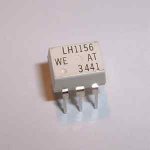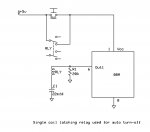leftyretro
New Member
We probably don't want to see a bunch of commercial offerings on this forum but I thought this deal too good to not let those interested know about.
I've no attachment to seller other then having bought 10 of them recently. These are 5 volt, single coil, 2 amp DPDT contacts, latching relays in a DIP package (however with short leads that aren't long enough to pull into my solderless breadboard).
At 5v I measure 17ma current draw so driving from picaxe outputs is possible and has worked fine on my 28X1. You only have to pulse the winding for around 10ms to set or reset it. Listing includes a linked data sheet. Listing shows 2124 units still avalible.
As I'm sure some of you know, latching relays can be used in some pretty tricky applications.
Lefty
http://cgi.ebay.com/Miniature-Single-Winding-Latching-Relay-5V-DC-DIP-2A_W0QQitemZ120096057860QQihZ002QQcategoryZ42897QQcmdZViewItem
I've no attachment to seller other then having bought 10 of them recently. These are 5 volt, single coil, 2 amp DPDT contacts, latching relays in a DIP package (however with short leads that aren't long enough to pull into my solderless breadboard).
At 5v I measure 17ma current draw so driving from picaxe outputs is possible and has worked fine on my 28X1. You only have to pulse the winding for around 10ms to set or reset it. Listing includes a linked data sheet. Listing shows 2124 units still avalible.
As I'm sure some of you know, latching relays can be used in some pretty tricky applications.
Lefty
http://cgi.ebay.com/Miniature-Single-Winding-Latching-Relay-5V-DC-DIP-2A_W0QQitemZ120096057860QQihZ002QQcategoryZ42897QQcmdZViewItem


